Warlord Games

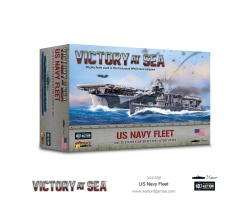
Although the United States of America contains a vast area of land, almost all of its allies and trading partners are overseas, and those interests require a powerful navy to support them. The US Navy possessed some of the largest and most modern battleships in the world at the outbreak of World War Two, and despite losses during the Japanese attack on Pearl Harbor, was able to maintain a powerful presence in the Pacific. However, in the vast reaches of that ocean, the battleship was no longer the king of battle. It was fortunate for the Americans that the handful of aircraft carriers then in service with the US Navy escaped destruction; given later events, it is doubtful that a pure battleship force could have defeated the Imperial Japanese Navy. The aircraft carrier became the main US naval asset during the war in the Pacific, which was very much a conflict between the air assets of opposing fleets. US carrier forces were hard-pressed early on but as the industrial might of the US was brought to bear, new carriers and air groups for them were deployed in such numbers that the enemy simply could not match their strength. US naval forces were primarily engaged in the Pacific, but some capital ships and larger numbers of destroyers were deployed to the Atlantic theatre where their primary opponents were German U-boats.
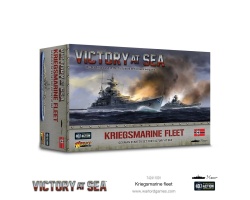
The Kriegsmarine had to be virtually rebuilt after the First World War. Forbidden to own capital ships and submarines, Germany nibbled away at first one clause of the Treaty of Versailles, then another, until a powerful navy force existed. At the outbreak of World War Two, relatively few capital ships were in commission, and no aircraft carriers. There was never any prospect of matching Britain in terms of capital ship numbers, but the qualitative advantage of the proposed super-battleships might have made a considerable difference. In any case, the Kriegsmarine was not a navy designed to tackle a major fleet head-on in fleet engagements. Instead, it was a commerce raiding force. German capital ships were built according to principles tried out in World War One; internal compartmentalisation and damage control measures made them very difficult to sink, while their efficient power plants ensured a good top speed, essential in a raider. Coupled with excellent fire control, using radar and other means, and big guns to make use of it, these vessels were extremely potent weapons. It has been said that Hitler never really understood naval warfare; be that as it may, the Kriegsmarine suffered from a lack of funding and materials, and from the internal politics of the Nazi leadership. Among its greatest detractors was Herman Goering, who connived constantly to ensure resources flowed into his Luftwaffe to the detriment of the navy. Major warship projects suffered from constant stops and starts as resources were allocated, then redistributed to other projects. Eventually, as the tide of war turned against Germany, Hitler gave up on his navy and transferred guns originally intended for ships to the coastal fortifications of the Atlantic Wall. The Kriegsmarine continued to fight on with dwindling resources. U-boats and destroyers remained a menace to allied shipping to the very end of the war.
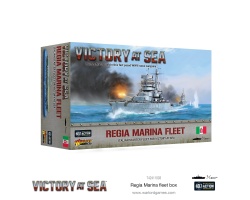
At the time of Italy's entry into World War Two, she possessed a modern and ? on paper at least ? highly effective fleet. Four battleships and eight heavy cruisers were available, with three more battleships being fitted out. However, there were no aircraft carriers (initially), not least because the Regia Marina was intended to operate near to friendly air bases in Italy and Africa. As might be expected from a force operating among the islands of the Mediterranean, light forces were quite numerous, including 14 light cruisers, 128 destroyers and 62 motor torpedo boats, which was a weapon favoured by the Italians and well suited to local conditions. No less than 115 submarines were available. The main Italian naval base was at Taranto, home of the battleship force. Lighter groups were based out of ports on the Italian mainland, Sicily and the Red Sea. The Regia Marina was primarily tasked with interrupting British logistics and trade through the Mediterranean, and with keeping the Axis nations' links to North Africa open. Major actions with the Royal Navy were not desirable nor really necessary for this mission to be carried out.
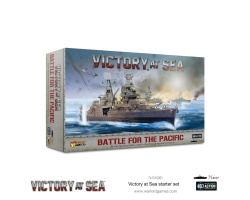
Victory at Sea is the game of naval combat during the Second World War. Throughout 1939-45, the nations of the world dueled across the oceans across the globe, only to discover the fundamental nature of naval warfare changing in the face of rapidly developing technologies. Now you can play out these confrontations on the tabletop with entire fleets drawn from the Royal Navy, US Navy, Imperial Japanese Navy, German Kriegsmarine or any of the other nations featured in Victory at Sea. From skirmishes involving single destroyers hunting down merchantmen to the clashing of massive battleships, from invasions of islands across the Pacific to mastering waves of dive bombers, Victory at Sea enables you to fight exciting battles that take place on the oceans of World War II. The Battle for the Pacific starter set focuses primarily on actions in the seas of the Far East, the Imperial Japanese Navy and the mighty US Navy clashing for control of the islands, resources and seas of the Pacific Theatre. The Victory at Sea rules manual presented in this starter game contains all you need to know to begin playing with the fleets included.
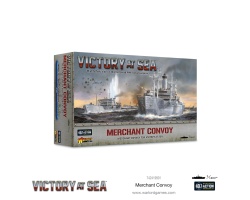
Preventing attacks on defenceless merchant ships is the other main role of the navy, and it was her that the war was fought, day in and day out, by the humble corvette, frigate and destroyer escort, and later by escort carriers. Commerce raiding formed a critical part of the strategy for several nations. Germany's Kriegsmarine almost brought Britain to her knees whilst the US Navy similarly strangled Japan's movement of industrial goods, materials, troops and supplies. Grouping ships into convoys meant there was more expanse of the empty ocean out there, hopefully raiders would not even find the convoy. It also made escorts more effective, but in the event, a convoy was hit by a surface raider, such as a heavy cruiser or battlecruiser, the target would be devastated in short order. Nevertheless, the convoy system helped a great deal. It would fall to the escorting ships to defend them until either a heavy covering force could come up in support of the merchants could make their escape. Some of the most heroic, and worst mismatched, actions of the war took place in defence of merchants convoys or troopships.
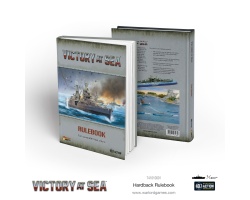
The Battle for the Pacific was only the beginning. Victory at Sea is the game of naval combat during the Second World War. Throughout 1939-45, the nations of the world duelled across the oceans across the globe, only to discover the fundamental nature of naval warfare changing in the face of rapidly developing technologies. Now you can play out these confrontations on the tabletop with entire fleets drawn from the Royal Navy, US Navy, Imperial Japanese Navy, German Kriegsmarine or any of the other nations featured in Victory at Sea. From skirmishes involving single destroyers hunting down merchantmen to the clashing of massive battleships, from invasions of islands across the Pacific to mastering waves of dive bombers, Victory at Sea enables you to fight exciting battles that take place on the oceans of World War II.

Submarines: <br />Compared to a German Type VII C submarine, the Marcello-class were much larger, displacing 1,060 tons versus 769. Speed and range between the two classes were almost similar, but the Marcello-class had more torpedo tubes than the famous U-Boat. The Marcello-class should be considered one of the most successful produced by the Italian shipyards and showed very good qualities, being fast, structurally robust and relatively manoeuvrable. <br /><br />MTBs: <br />Capable of 45 knots, the Italian Motoscafo Armato Silurante (Armed Torpedo Boat) or MAS Boats were extremely active in the Mediterranean theatre. Though they were not well suited to rougher seas, they still achieved a great deal of note, including the torpedoing of HMS Capetown and an attack on the harbour of Malta, though the latter was a failure that cost two MAS Boats. Based on German S1 class S-Boats the Italians found in the port of Cattaro in Yugoslavia, the MS Boat was larger and far more seaworthy than the MAS designs. Though not as fast, it was far better suited to long-range patrols in the Mediterranean being more stable and more comfortable. It was an MS Boat that sank the largest vessel of any MTB in the war, HMS Manchester, in 1942.
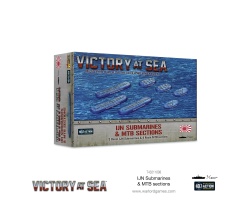
Submarines:<br />The Kaidai-7-class, or KD-7, was developed in the late 1930s, following on from the preceding KD-6 class. With a surface range of 8,000nm at 16kts, and a submerged endurance of 50nm at 5kts, they possessed a slightly better underwater performance to the late-model KD-6s and better surface speed (though not range) than the earlier members of that class. All members of the class were lost by mid-1944. Another ocean-going submersible using 533mm forward and aft torpedo tubes, it served in the South Pacific as well as the waters off Australia. I-177 sunk the hospital ship AHS Centaur off Stradbroke Island. It was presumed lost with all hands on 18 November 1944, while the I-176 was lost six months earlier off of the Solomon's. There were 10 KD-7 submarines built overall. <br /><br />MTBs:<br />Designed as a suicide craft, the Shin'yo either carried a powerful explosive or two depth charges. The depth charges were intended to be planted by the pilot of the boat, after which he would then make his escape. Although nearly 10,000 were built, they accounted for the sinking of only 5 ships, mainly landing craft. The Imperial Japanese Navy fielded a number of variants on a standard torpedo boat design, differing mainly in machinery fit which affected displacement, giving the illusion of more variety than existed in practice. 238 boats were built within these designations, all armed with two 18-inch torpedoes and 25mm or 13.2mm guns.
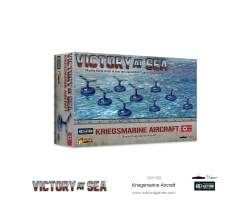
With carriers planned but not built, Germany?s airpower was limited to launching from airfields far from open water. As such, they were mainly deployed against ships close to mainland Europe. Despite this, the Luftwaffe dive-bombers proved devastatingly effective against Allied ships. Focke-Wulf FW 200 Condor:The Focke-Wulf Fw 200 Condor began its operational life as an airliner and was the first aircraft to fly non-stop between Berlin and New York. Though used in a variety of roles, the version presented here is a maritime patrol aircraft that saw use as a long-range and anti-shipping bomber. These planes searched for Allied convoys and could perform anti-submarine warfare duties. Junkers Ju 88:The Ju 88 was one of the most effective and versatile strike aircraft of the war. It served as a medium bomber and tankbuster on land, and at sea could deliver bombs or torpedoes. The Ju 88?s high speed allowed it to avoid interception much of the time or outrun fighters if necessary, making it much more survivable than most contemporary Allied designs. Messerschmitt Bf109:Made famous in the Battle of Britain, the Bf 109 was constantly upgraded throughout the war to remain competitive, though it was to be outclassed by the newer FW 190. At the start of the war, however, it was a fearsome fighter, and a suitable counterpart to the Spitfire.
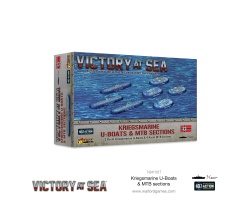
Submarines: A long-ranged submersible, the Type IX was the most successful U-boat of the war, with each vessel averaging over 100,000 tons of shipping sunk. One Type IX, U-107, made the most successful convoy mission of the war, with nearly 100,000 tons of shipping sunk out of Freetown in Africa. The latest variants of this design were capable of ranges of more than 23,000 miles, allowing them to rove far in search of convoys, while their heavy load of torpedoes allowed them to keep pace with a convoy, attacking night after night. MTBs:The R1-class of R-Boat (from the German Raumboot, meaning minesweeper) was intended to be used as a shallow water minesweeper but, as the war went on, it became a multi-role craft. Its duties expanded to include patrol, antisubmarine, convoy escort, minelaying, and rescue operations. Some classes of R-Boat, such as the R310, were fitted with torpedo tubes, though performance was very modest compared to craft specifically designed for the role. The ultimate S-Boat to be operational in significant numbers was the S-100-class, which was produced from 1943 and was said to be the best fast patrol boat of its time. The S-100-class was nicknamed the Calotte, as it featured a rounded armoured bridge. It was powered by three Daimler-Benz engines giving it an overall capacity of around 7,500 hp and developing an outstanding top speed of 48 knots.
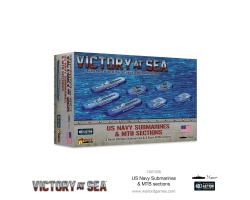
<p>Submarines:<br />The Gato-class of submarine was the first mass production US submarine class of the Second World War, forming the majority of the United States Navy's submarine fleet of the war. It was the Gato-class, and the successors of her design that were largely responsible for the disruption of the Japanese merchant fleet. Individual Gato-class vessels were given names of marine creatures, with the lead of her class named for a type of small catshark. <br /><br />MTBs:<br />The Elco mounted four torpedo tubes which, combined with its speed, made it a serious threat to larger ships. The largest PT boat used by the US Navy, the Elco is also notable for future President Kennedy commanding one. Crews of these boats relied on their smaller size, speed and manoeuvrability - and darkness - to survive.</p>
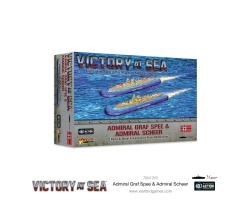
The Deutschland-class of warships were relatively small, by battleship standards, but were well armoured and carried the type of armament traditionally seen only on battleships. This led to them being nicknamed 'pocket battleships'. Superb commerce raiders, the Admiral Scheer successfully plied the Atlantic and Indian Oceans, disrupting merchant shipping wherever it went, whilst the Admiral Graf Spee was famously cornered during the Battle of the River Plate and scuttled herself soon after.
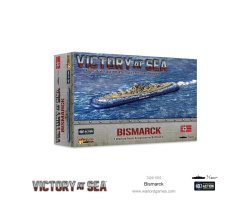
Two Bismarck-class battleships were built for the Kriegsmarine. Bismarck was the first, named for the Chancellor (Otto von Bismarck). The battleship was laid down in July 1936 and launched in February 1939. She and her sister ship, Tirpitz, were two of the largest battleships built by any European power, and certainly, the largest built by Germany. Whilst the physical power they held was tremendous, they also wreaked psychological havoc amongst the allies. Churchill was determined that the two battleships not be let loose upon the Atlantic. Bismarck's career, however, was woefully short, spanning just eight months under a single Captain, Ernst Lindeman. During this time, she only took part in a single offensive action that lasted just eight days in May 1941. This operation, codenamed Rhein?bung, was to attempt what the Allies feared, a breakthrough to the Atlantic and raid Allied shipping efforts between Britain and North America (along with the heavy cruiser Prinz Eugen). The two vessels were detected multiple times off Scandinavia, prompting Britain to initiate naval blocking manoeuvres. The resultant battle, the Battle of the Denmark Strait, saw the British vessels HMS Hood and HMS Prince of Wales engage the two vessels. Hood was destroyed for her efforts and Prince of Wales suffered damage, forcing a retreat. However, Bismarck had suffered damage significant enough to put an end to her raiding mission. Limping for occupied France for repairs, Bismarck was pursued by a Royal Navy set on retribution for the sinking of HMS Hood. She was attacked by 16 Fairey Swordfish biplane torpedo bombers deployed by HMS Ark Royal. A direct hit rendered Bismarck's steering gear inoperable. The following morning, she suffered crippling damage in a battle against two British battleships and two cruisers. She was subsequently, on 27 May 1941, scuttled by her crew and sank with many lives lost.
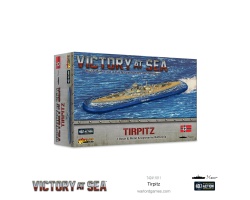
Sister ship to the Bismarck, the Tirpitz was 2,000 tons heavier and thus the heaviest warship to have ever been produced by a European navy. She served in Norway and the Baltic Fleet acting as a potent deterrent. The Tirpitz became an obsession for the British. After the sinking of the Bismarck, the Tirpitz, as Germany?s most powerful warship, was destined to spend much of the war in port. After the daring St Nazaire raid by the British, it was deemed unfeasible to use Tirpitz against the Atlantic convoys of the Allies. Instead, she was used sparingly, as a deterrent against Allied invasion in Norway and to intercept Allied convoys to the Soviet Union. In September 1943, along with the battleship Scharnhorst, she bombarded Allied positions on Spitzbergen. This was the only occasion the mighty battleship fired her main battery in anger. The relentless attacks of the British would prove to be the end of the mighty vessel. They launched many raids on her; from mini-submarines and two full-scale air raids. She was eventually?sunk?in 1944 by Lancaster bombers armed with 12,000 lb Tallboy bombs.
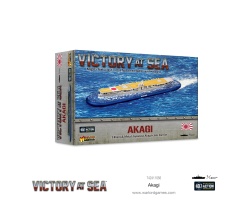
Originally laid down as an Amagi-class battlecruiser, the stipulations of the Washington Treaty resulted in her conversion to an aircraft carrier. As a result, Akagi ("Red Castle") was one of Japan's first large aircraft carriers. Akagi and her near-sister Kaga straddled the line between carrier and dreadnought. To keep both options open, the ships were designed to be quickly converted to capital ships. They carried turret barbettes, magazines and other equipment to support big gun turrets, and the wooden flight deck and hangar deck were designed to be quickly stripped off, making room for turrets to be mounted. However, by the mid-1930s, the admirals believed the aircraft carrier to be the equal of the capital ship and Akagi was extensively rebuilt to improve aircraft handling capacity, ending any possibility of later converting it to a capital ship. Her aircraft served in the Second Sino-Japanese War in the late 1930s. With the formation of the First Air Fleet in 1941, she became its flagship and remained so until her sinking. Notable actions include the attack on Pearl Harbor, the invasion of Rabaul, bombing Darwin, Australia and the Indian Ocean Raid. In June 1942, she participated in the Battle of Midway, her aircraft bombarding the American-held atoll. However, US aircraft originating from Midway, and the US carriers Enterprise, Hornet and Yorktown attacked Akagi and three other Japanese fleet carriers. Dive bombers from USS Enterprise severely damaged Akagi, forcing friendly escorting destroyers to scuttle her to avoid her falling into US hands. The loss of four Japanese carriers at this engagement, including Akagi, was a key defeat for Japan, decisively shifting the balance of power in the Pacific theatre.
Out of Stock
$30

The Littorio class was the first new Italian battleship class for nearly a decade when design work began in 1930. Initially designed to remain within the 35,000-ton Washington Treaty limit, the final displacement was just over 40,000 tons. As well as being good-looking ships, the Littorio-class included a number of new features including high-velocity guns. They were probably the first of the "fast battleships" that would come to dominate capital ship design in the late 1930s and onward. Vittorio Veneto saw extensive service in World War Two, participating in the Battles of Cape Spartivento in November 1940 and Cape Matapan in March 1941. Though struck by a torpedo at this latter engagement and again later courtesy of a British submarine, she would escape unscathed from the British raid on Taranto of November 1940. 1941 and early 1942 was spent attempting to attack British convoys en route to Malta until fuel shortages forced the end of such activity. In the armistice of 1943, she was surrendered to the Allies after Italy withdrew from the war, spending the next three years under British control in Egypt. Thereafter she was allocated to Britain as a war prize and was scrapped.
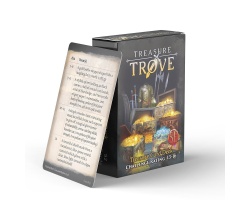
Treasure Deck CR 13-16 includes up to very rare-level magical items and starts to get into some of the highest end loot in the game. Step your role playing games up to the next level with this incredible expansion deck ? making it more fun for both players and the GM. The deck includes: Wealth Gems Weapons Armor Other, stronger, magical items (up to very-rare) Factors that can influence the storyline Complete your Treasure Deck collection today with the Treasure Deck CR 13-16.
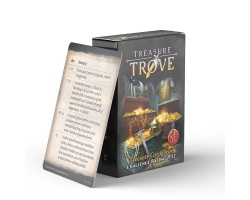
The Treasure Deck CR 9-12 once again takes things one step further by including rare-level magical items while still keeping the general theme of the decks so that they fit in well with your existing RPG materials. Sometimes instead of simply finding wealth or items, the players are rewarded with things to could be used to advance the storytelling. This deck includes: Wealth Gems Weapons Armor Other, stronger, magical items Factors that can influence the storyline Get yours today!
US Navy Fleet Box (WGVS-742412002)
Although the United States of America contains a vast area of land, almost all of its allies and trading partners are overseas, and those interests require a powerful navy to support them. The US Navy possessed some of the largest and most modern battleships in the world at the outbreak of World War Two, and despite losses during the Japanese attack on Pearl Harbor, was able to maintain a powerful presence in the Pacific. However, in the vast reaches of that ocean, the battleship was no longer the king of battle. It was fortunate for the Americans that the handful of aircraft carriers then in service with the US Navy escaped destruction; given later events, it is doubtful that a pure battleship force could have defeated the Imperial Japanese Navy. The aircraft carrier became the main US naval asset during the war in the Pacific, which was very much a conflict between the air assets of opposing fleets. US carrier forces were hard-pressed early on but as the industrial might of the US was brought to bear, new carriers and air groups for them were deployed in such numbers that the enemy simply could not match their strength. US naval forces were primarily engaged in the Pacific, but some capital ships and larger numbers of destroyers were deployed to the Atlantic theatre where their primary opponents were German U-boats.
Kriegsmarine Fleet Box (WGVS-742411001)
The Kriegsmarine had to be virtually rebuilt after the First World War. Forbidden to own capital ships and submarines, Germany nibbled away at first one clause of the Treaty of Versailles, then another, until a powerful navy force existed. At the outbreak of World War Two, relatively few capital ships were in commission, and no aircraft carriers. There was never any prospect of matching Britain in terms of capital ship numbers, but the qualitative advantage of the proposed super-battleships might have made a considerable difference. In any case, the Kriegsmarine was not a navy designed to tackle a major fleet head-on in fleet engagements. Instead, it was a commerce raiding force. German capital ships were built according to principles tried out in World War One; internal compartmentalisation and damage control measures made them very difficult to sink, while their efficient power plants ensured a good top speed, essential in a raider. Coupled with excellent fire control, using radar and other means, and big guns to make use of it, these vessels were extremely potent weapons. It has been said that Hitler never really understood naval warfare; be that as it may, the Kriegsmarine suffered from a lack of funding and materials, and from the internal politics of the Nazi leadership. Among its greatest detractors was Herman Goering, who connived constantly to ensure resources flowed into his Luftwaffe to the detriment of the navy. Major warship projects suffered from constant stops and starts as resources were allocated, then redistributed to other projects. Eventually, as the tide of war turned against Germany, Hitler gave up on his navy and transferred guns originally intended for ships to the coastal fortifications of the Atlantic Wall. The Kriegsmarine continued to fight on with dwindling resources. U-boats and destroyers remained a menace to allied shipping to the very end of the war.
Regia Marina Fleet Box (WGVS-742411003)
At the time of Italy's entry into World War Two, she possessed a modern and ? on paper at least ? highly effective fleet. Four battleships and eight heavy cruisers were available, with three more battleships being fitted out. However, there were no aircraft carriers (initially), not least because the Regia Marina was intended to operate near to friendly air bases in Italy and Africa. As might be expected from a force operating among the islands of the Mediterranean, light forces were quite numerous, including 14 light cruisers, 128 destroyers and 62 motor torpedo boats, which was a weapon favoured by the Italians and well suited to local conditions. No less than 115 submarines were available. The main Italian naval base was at Taranto, home of the battleship force. Lighter groups were based out of ports on the Italian mainland, Sicily and the Red Sea. The Regia Marina was primarily tasked with interrupting British logistics and trade through the Mediterranean, and with keeping the Axis nations' links to North Africa open. Major actions with the Royal Navy were not desirable nor really necessary for this mission to be carried out.
Battle for the Pacific - Victory at Sea Starter Game (WGVS-741510001)
Victory at Sea is the game of naval combat during the Second World War. Throughout 1939-45, the nations of the world dueled across the oceans across the globe, only to discover the fundamental nature of naval warfare changing in the face of rapidly developing technologies. Now you can play out these confrontations on the tabletop with entire fleets drawn from the Royal Navy, US Navy, Imperial Japanese Navy, German Kriegsmarine or any of the other nations featured in Victory at Sea. From skirmishes involving single destroyers hunting down merchantmen to the clashing of massive battleships, from invasions of islands across the Pacific to mastering waves of dive bombers, Victory at Sea enables you to fight exciting battles that take place on the oceans of World War II. The Battle for the Pacific starter set focuses primarily on actions in the seas of the Far East, the Imperial Japanese Navy and the mighty US Navy clashing for control of the islands, resources and seas of the Pacific Theatre. The Victory at Sea rules manual presented in this starter game contains all you need to know to begin playing with the fleets included.
Merchant Convoy (WGVS-742419901)
Preventing attacks on defenceless merchant ships is the other main role of the navy, and it was her that the war was fought, day in and day out, by the humble corvette, frigate and destroyer escort, and later by escort carriers. Commerce raiding formed a critical part of the strategy for several nations. Germany's Kriegsmarine almost brought Britain to her knees whilst the US Navy similarly strangled Japan's movement of industrial goods, materials, troops and supplies. Grouping ships into convoys meant there was more expanse of the empty ocean out there, hopefully raiders would not even find the convoy. It also made escorts more effective, but in the event, a convoy was hit by a surface raider, such as a heavy cruiser or battlecruiser, the target would be devastated in short order. Nevertheless, the convoy system helped a great deal. It would fall to the escorting ships to defend them until either a heavy covering force could come up in support of the merchants could make their escape. Some of the most heroic, and worst mismatched, actions of the war took place in defence of merchants convoys or troopships.
Victory at Sea Hardback Book (WGVS-741010001)
The Battle for the Pacific was only the beginning. Victory at Sea is the game of naval combat during the Second World War. Throughout 1939-45, the nations of the world duelled across the oceans across the globe, only to discover the fundamental nature of naval warfare changing in the face of rapidly developing technologies. Now you can play out these confrontations on the tabletop with entire fleets drawn from the Royal Navy, US Navy, Imperial Japanese Navy, German Kriegsmarine or any of the other nations featured in Victory at Sea. From skirmishes involving single destroyers hunting down merchantmen to the clashing of massive battleships, from invasions of islands across the Pacific to mastering waves of dive bombers, Victory at Sea enables you to fight exciting battles that take place on the oceans of World War II.
Regia Marina Submarines And MTB Sections (WGVS-743211009)
Submarines: <br />Compared to a German Type VII C submarine, the Marcello-class were much larger, displacing 1,060 tons versus 769. Speed and range between the two classes were almost similar, but the Marcello-class had more torpedo tubes than the famous U-Boat. The Marcello-class should be considered one of the most successful produced by the Italian shipyards and showed very good qualities, being fast, structurally robust and relatively manoeuvrable. <br /><br />MTBs: <br />Capable of 45 knots, the Italian Motoscafo Armato Silurante (Armed Torpedo Boat) or MAS Boats were extremely active in the Mediterranean theatre. Though they were not well suited to rougher seas, they still achieved a great deal of note, including the torpedoing of HMS Capetown and an attack on the harbour of Malta, though the latter was a failure that cost two MAS Boats. Based on German S1 class S-Boats the Italians found in the port of Cattaro in Yugoslavia, the MS Boat was larger and far more seaworthy than the MAS designs. Though not as fast, it was far better suited to long-range patrols in the Mediterranean being more stable and more comfortable. It was an MS Boat that sank the largest vessel of any MTB in the war, HMS Manchester, in 1942.
Imperial Japanese Navy and MTB Sections (WGVS-743211008)
Submarines:<br />The Kaidai-7-class, or KD-7, was developed in the late 1930s, following on from the preceding KD-6 class. With a surface range of 8,000nm at 16kts, and a submerged endurance of 50nm at 5kts, they possessed a slightly better underwater performance to the late-model KD-6s and better surface speed (though not range) than the earlier members of that class. All members of the class were lost by mid-1944. Another ocean-going submersible using 533mm forward and aft torpedo tubes, it served in the South Pacific as well as the waters off Australia. I-177 sunk the hospital ship AHS Centaur off Stradbroke Island. It was presumed lost with all hands on 18 November 1944, while the I-176 was lost six months earlier off of the Solomon's. There were 10 KD-7 submarines built overall. <br /><br />MTBs:<br />Designed as a suicide craft, the Shin'yo either carried a powerful explosive or two depth charges. The depth charges were intended to be planted by the pilot of the boat, after which he would then make his escape. Although nearly 10,000 were built, they accounted for the sinking of only 5 ships, mainly landing craft. The Imperial Japanese Navy fielded a number of variants on a standard torpedo boat design, differing mainly in machinery fit which affected displacement, giving the illusion of more variety than existed in practice. 238 boats were built within these designations, all armed with two 18-inch torpedoes and 25mm or 13.2mm guns.
Kriegsmarine Aircraft (WGVS-742411033)
With carriers planned but not built, Germany?s airpower was limited to launching from airfields far from open water. As such, they were mainly deployed against ships close to mainland Europe. Despite this, the Luftwaffe dive-bombers proved devastatingly effective against Allied ships. Focke-Wulf FW 200 Condor:The Focke-Wulf Fw 200 Condor began its operational life as an airliner and was the first aircraft to fly non-stop between Berlin and New York. Though used in a variety of roles, the version presented here is a maritime patrol aircraft that saw use as a long-range and anti-shipping bomber. These planes searched for Allied convoys and could perform anti-submarine warfare duties. Junkers Ju 88:The Ju 88 was one of the most effective and versatile strike aircraft of the war. It served as a medium bomber and tankbuster on land, and at sea could deliver bombs or torpedoes. The Ju 88?s high speed allowed it to avoid interception much of the time or outrun fighters if necessary, making it much more survivable than most contemporary Allied designs. Messerschmitt Bf109:Made famous in the Battle of Britain, the Bf 109 was constantly upgraded throughout the war to remain competitive, though it was to be outclassed by the newer FW 190. At the start of the war, however, it was a fearsome fighter, and a suitable counterpart to the Spitfire.
Kriegsmarine U-Boats And MTB Sections (WGVS-742411017)
Submarines: A long-ranged submersible, the Type IX was the most successful U-boat of the war, with each vessel averaging over 100,000 tons of shipping sunk. One Type IX, U-107, made the most successful convoy mission of the war, with nearly 100,000 tons of shipping sunk out of Freetown in Africa. The latest variants of this design were capable of ranges of more than 23,000 miles, allowing them to rove far in search of convoys, while their heavy load of torpedoes allowed them to keep pace with a convoy, attacking night after night. MTBs:The R1-class of R-Boat (from the German Raumboot, meaning minesweeper) was intended to be used as a shallow water minesweeper but, as the war went on, it became a multi-role craft. Its duties expanded to include patrol, antisubmarine, convoy escort, minelaying, and rescue operations. Some classes of R-Boat, such as the R310, were fitted with torpedo tubes, though performance was very modest compared to craft specifically designed for the role. The ultimate S-Boat to be operational in significant numbers was the S-100-class, which was produced from 1943 and was said to be the best fast patrol boat of its time. The S-100-class was nicknamed the Calotte, as it featured a rounded armoured bridge. It was powered by three Daimler-Benz engines giving it an overall capacity of around 7,500 hp and developing an outstanding top speed of 48 knots.
US Navy Submarines And MTB Sections (WGVS-743212005)
<p>Submarines:<br />The Gato-class of submarine was the first mass production US submarine class of the Second World War, forming the majority of the United States Navy's submarine fleet of the war. It was the Gato-class, and the successors of her design that were largely responsible for the disruption of the Japanese merchant fleet. Individual Gato-class vessels were given names of marine creatures, with the lead of her class named for a type of small catshark. <br /><br />MTBs:<br />The Elco mounted four torpedo tubes which, combined with its speed, made it a serious threat to larger ships. The largest PT boat used by the US Navy, the Elco is also notable for future President Kennedy commanding one. Crews of these boats relied on their smaller size, speed and manoeuvrability - and darkness - to survive.</p>
Admiral Graf Spee & Admiral Scheer (WGVS-742411012)
The Deutschland-class of warships were relatively small, by battleship standards, but were well armoured and carried the type of armament traditionally seen only on battleships. This led to them being nicknamed 'pocket battleships'. Superb commerce raiders, the Admiral Scheer successfully plied the Atlantic and Indian Oceans, disrupting merchant shipping wherever it went, whilst the Admiral Graf Spee was famously cornered during the Battle of the River Plate and scuttled herself soon after.
Bismark (WGVS-742411010)
Two Bismarck-class battleships were built for the Kriegsmarine. Bismarck was the first, named for the Chancellor (Otto von Bismarck). The battleship was laid down in July 1936 and launched in February 1939. She and her sister ship, Tirpitz, were two of the largest battleships built by any European power, and certainly, the largest built by Germany. Whilst the physical power they held was tremendous, they also wreaked psychological havoc amongst the allies. Churchill was determined that the two battleships not be let loose upon the Atlantic. Bismarck's career, however, was woefully short, spanning just eight months under a single Captain, Ernst Lindeman. During this time, she only took part in a single offensive action that lasted just eight days in May 1941. This operation, codenamed Rhein?bung, was to attempt what the Allies feared, a breakthrough to the Atlantic and raid Allied shipping efforts between Britain and North America (along with the heavy cruiser Prinz Eugen). The two vessels were detected multiple times off Scandinavia, prompting Britain to initiate naval blocking manoeuvres. The resultant battle, the Battle of the Denmark Strait, saw the British vessels HMS Hood and HMS Prince of Wales engage the two vessels. Hood was destroyed for her efforts and Prince of Wales suffered damage, forcing a retreat. However, Bismarck had suffered damage significant enough to put an end to her raiding mission. Limping for occupied France for repairs, Bismarck was pursued by a Royal Navy set on retribution for the sinking of HMS Hood. She was attacked by 16 Fairey Swordfish biplane torpedo bombers deployed by HMS Ark Royal. A direct hit rendered Bismarck's steering gear inoperable. The following morning, she suffered crippling damage in a battle against two British battleships and two cruisers. She was subsequently, on 27 May 1941, scuttled by her crew and sank with many lives lost.
Tirpitz (WGVS-742411011)
Sister ship to the Bismarck, the Tirpitz was 2,000 tons heavier and thus the heaviest warship to have ever been produced by a European navy. She served in Norway and the Baltic Fleet acting as a potent deterrent. The Tirpitz became an obsession for the British. After the sinking of the Bismarck, the Tirpitz, as Germany?s most powerful warship, was destined to spend much of the war in port. After the daring St Nazaire raid by the British, it was deemed unfeasible to use Tirpitz against the Atlantic convoys of the Allies. Instead, she was used sparingly, as a deterrent against Allied invasion in Norway and to intercept Allied convoys to the Soviet Union. In September 1943, along with the battleship Scharnhorst, she bombarded Allied positions on Spitzbergen. This was the only occasion the mighty battleship fired her main battery in anger. The relentless attacks of the British would prove to be the end of the mighty vessel. They launched many raids on her; from mini-submarines and two full-scale air raids. She was eventually?sunk?in 1944 by Lancaster bombers armed with 12,000 lb Tallboy bombs.
Akagi (WGVS-742411056)
Originally laid down as an Amagi-class battlecruiser, the stipulations of the Washington Treaty resulted in her conversion to an aircraft carrier. As a result, Akagi ("Red Castle") was one of Japan's first large aircraft carriers. Akagi and her near-sister Kaga straddled the line between carrier and dreadnought. To keep both options open, the ships were designed to be quickly converted to capital ships. They carried turret barbettes, magazines and other equipment to support big gun turrets, and the wooden flight deck and hangar deck were designed to be quickly stripped off, making room for turrets to be mounted. However, by the mid-1930s, the admirals believed the aircraft carrier to be the equal of the capital ship and Akagi was extensively rebuilt to improve aircraft handling capacity, ending any possibility of later converting it to a capital ship. Her aircraft served in the Second Sino-Japanese War in the late 1930s. With the formation of the First Air Fleet in 1941, she became its flagship and remained so until her sinking. Notable actions include the attack on Pearl Harbor, the invasion of Rabaul, bombing Darwin, Australia and the Indian Ocean Raid. In June 1942, she participated in the Battle of Midway, her aircraft bombarding the American-held atoll. However, US aircraft originating from Midway, and the US carriers Enterprise, Hornet and Yorktown attacked Akagi and three other Japanese fleet carriers. Dive bombers from USS Enterprise severely damaged Akagi, forcing friendly escorting destroyers to scuttle her to avoid her falling into US hands. The loss of four Japanese carriers at this engagement, including Akagi, was a key defeat for Japan, decisively shifting the balance of power in the Pacific theatre.
Out of Stock
$30
Vittorio Veneto Battleship (WGVS-742411090)
The Littorio class was the first new Italian battleship class for nearly a decade when design work began in 1930. Initially designed to remain within the 35,000-ton Washington Treaty limit, the final displacement was just over 40,000 tons. As well as being good-looking ships, the Littorio-class included a number of new features including high-velocity guns. They were probably the first of the "fast battleships" that would come to dominate capital ship design in the late 1930s and onward. Vittorio Veneto saw extensive service in World War Two, participating in the Battles of Cape Spartivento in November 1940 and Cape Matapan in March 1941. Though struck by a torpedo at this latter engagement and again later courtesy of a British submarine, she would escape unscathed from the British raid on Taranto of November 1940. 1941 and early 1942 was spent attempting to attack British convoys en route to Malta until fuel shortages forced the end of such activity. In the armistice of 1943, she was surrendered to the Allies after Italy withdrew from the war, spending the next three years under British control in Egypt. Thereafter she was allocated to Britain as a war prize and was scrapped.
Treasure Deck CR 13-16 (5E) (NRG1027)
Treasure Deck CR 13-16 includes up to very rare-level magical items and starts to get into some of the highest end loot in the game. Step your role playing games up to the next level with this incredible expansion deck ? making it more fun for both players and the GM. The deck includes: Wealth Gems Weapons Armor Other, stronger, magical items (up to very-rare) Factors that can influence the storyline Complete your Treasure Deck collection today with the Treasure Deck CR 13-16.
Treasure Deck CR 9-12 (5E) (NRG1026)
The Treasure Deck CR 9-12 once again takes things one step further by including rare-level magical items while still keeping the general theme of the decks so that they fit in well with your existing RPG materials. Sometimes instead of simply finding wealth or items, the players are rewarded with things to could be used to advance the storytelling. This deck includes: Wealth Gems Weapons Armor Other, stronger, magical items Factors that can influence the storyline Get yours today!
- 1








 Victory at Sea
Victory at Sea






 Clearance
Clearance